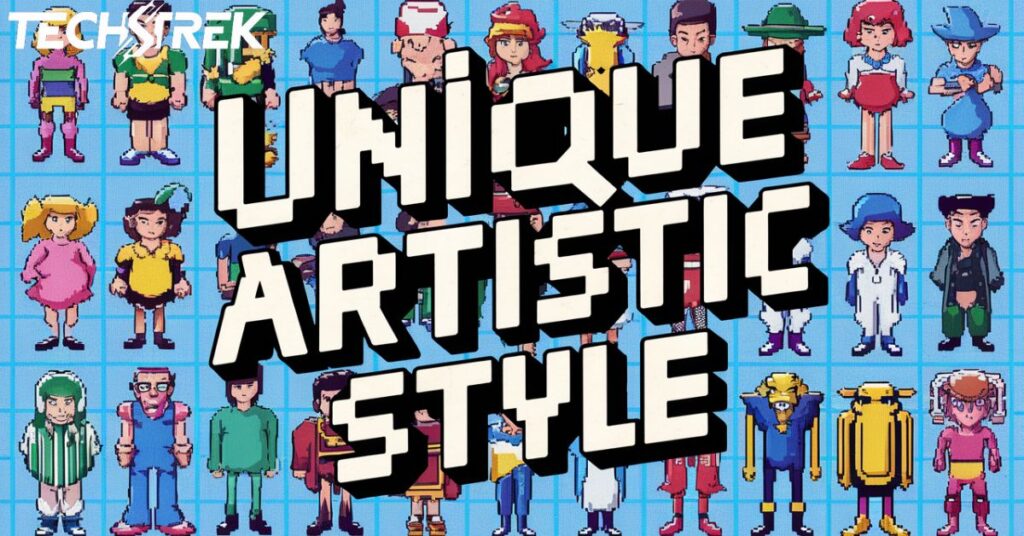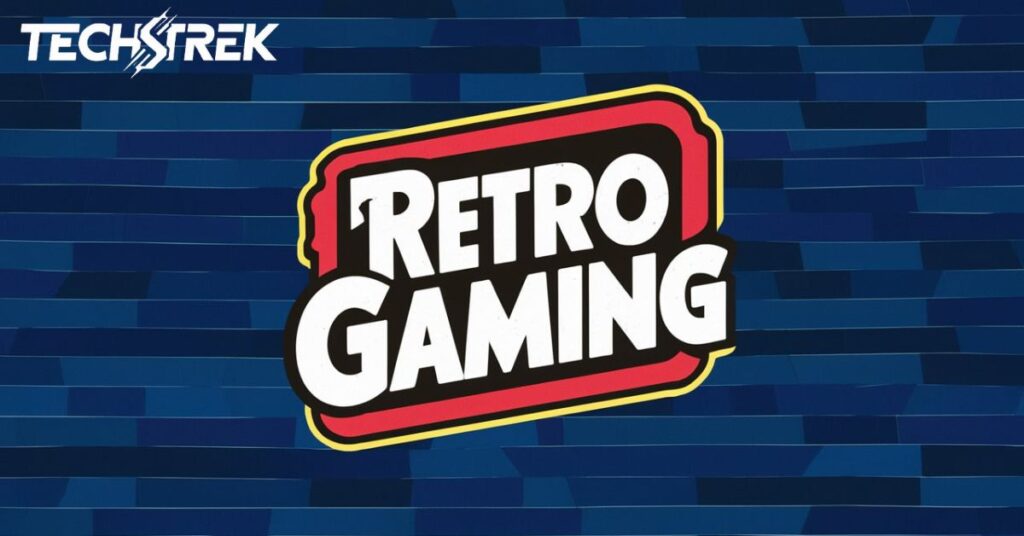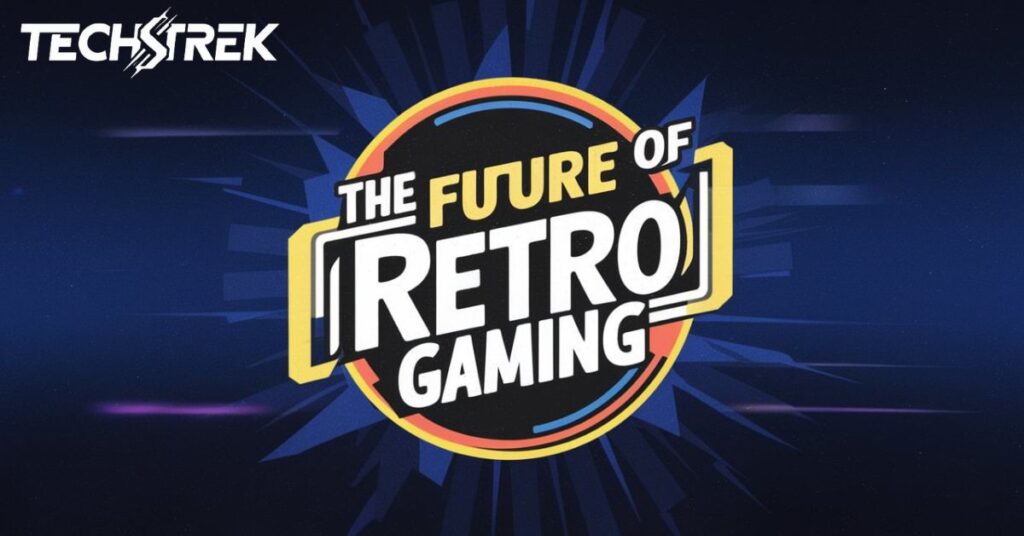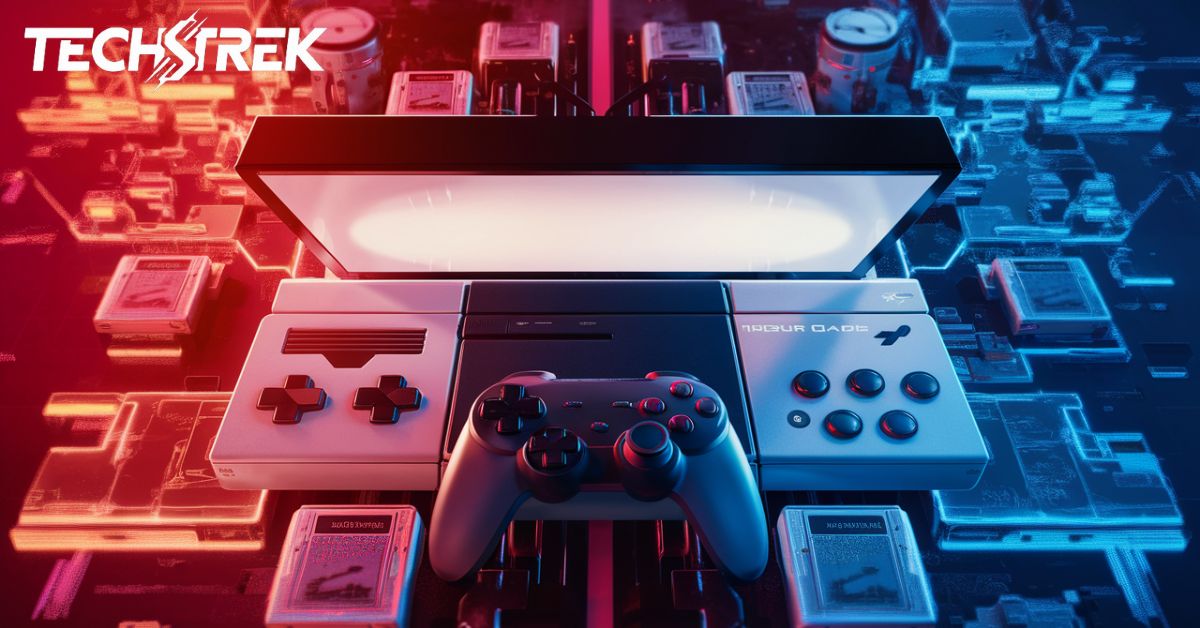Retro gaming has surged in popularity, offering simplicity and nostalgia. As modern gaming evolves, classic games provide a refreshing escape to the roots of interactive entertainment.
This revival is a cultural phenomenon, with old consoles and emulators making classic games accessible. Players are driven by a desire to preserve and celebrate gaming history.
Retro gaming communities unite fans across generations, creating spaces for sharing memories and celebrating classic titles. Embracing retro gaming connects us with the past and enriches today’s gaming landscape.
The Appeal of Retro Gaming
Nostalgia Factor
One of the primary drivers behind the popularity of retro gaming is nostalgia. For many adults who grew up during the golden age of arcade games, home consoles, and early personal computers, revisiting these classic titles evokes fond memories of their childhood.
The familiar sights, sounds, and gameplay mechanics transport players back to a simpler time, providing a comforting escape from the complexities of modern life.
Simplicity and Accessibility
Retro games often feature straightforward gameplay mechanics and intuitive controls, making them accessible to players of all skill levels. Unlike many modern games that require extensive tutorials and complex button combinations, classic titles can often be picked up and enjoyed immediately.
This simplicity allows players to focus on the core gaming experience without being overwhelmed by intricate systems or convoluted storylines.
Unique Artistic Style

The limitations of early gaming hardware forced developers to be creative with their visual designs. As a result, many retro games feature distinct pixel art styles that have become iconic in their own right.
These charming, low-resolution graphics have a timeless quality that continues to captivate players decades after their initial release. The resurgence of pixel art in modern indie games is a testament to the enduring appeal of this aesthetic.
Challenge and Skill-Based Gameplay
Retro games are known for their high difficulty levels and emphasis on skill-based gameplay:
- Require mastery of precise timing and quick reflexes
- Feature complex level designs demanding memorization
- Lack modern conveniences like autosaves or checkpoints
- Encourage pattern recognition and learning from failures
- Use high scores and limited lives to create urgency
- Offer satisfaction in overcoming difficult challenges
- Foster competitive scenes and speedrunning communities
- Present steeper learning curves with rewarding mastery
This level of challenge appeals to players who enjoy testing and improving their abilities through practice and persistence.
The Evolution of Retro Gaming
From Obsolescence to Collectibles
As newer consoles and more advanced games entered the market, older systems and titles were often discarded or forgotten. However, over time, these once-obsolete items have become highly sought-after collectibles.
Rare games, limited edition consoles, and original packaging can now fetch impressive prices in the collector’s market, turning retro gaming into a valuable hobby for enthusiasts and investors alike.
Emulation and Digital Distribution
The advent of emulation technology has made it easier than ever for players to access classic games on modern devices. Emulators allow gamers to run old software on new hardware, preserving these titles for future generations.
Additionally, digital distribution platforms have begun offering official releases of retro games, making it simple for players to legally purchase and enjoy classic titles on contemporary systems.
Retro-Inspired Modern Games

The influence of retro gaming extends beyond just playing old titles. Many modern game developers draw inspiration from classic games, creating new experiences that blend nostalgic elements with contemporary design principles.
This fusion of old and new has given rise to a thriving indie game scene, where developers often pay homage to the games that inspired them while pushing the boundaries of what’s possible with current technology.
Read this Blog: How to Get Technology Points in Palworld
Preserving Gaming History
The Importance of Game Preservation
As the video game industry continues to evolve, there is a growing awareness of the need to preserve gaming history. Retro gaming enthusiasts and organizations are working to archive and restore classic games, hardware, and related materials to ensure that future generations can experience and study these important cultural artifacts.
Museums and Exhibitions
Several museums and exhibitions dedicated to video game history have emerged in recent years, showcasing the evolution of gaming technology and highlighting the cultural impact of classic titles. These institutions play a crucial role in educating the public about the significance of retro games and their place in the broader context of media history.
Documentation and Oral Histories
Efforts to document the stories and experiences of early game developers, players, and industry pioneers are underway. Oral history projects and in-depth interviews provide valuable insights into the creation of classic games and the early days of the industry, helping to preserve this knowledge for future generations.
Retro Gaming Communities
Online Forums and Social Media
The internet has played a significant role in connecting retro gaming enthusiasts from around the world. Online forums, social media groups, and dedicated websites provide platforms for fans to discuss their favorite games, share tips and strategies, and connect with like-minded individuals.
Retro Gaming Events and Conventions
Numerous events and conventions dedicated to retro gaming have sprung up in recent years, offering fans the opportunity to gather in person, play classic games, and celebrate their shared passion. These events often feature tournaments, panel discussions, and vendor areas where attendees can purchase rare games and hardware.
Speedrunning and Competitive Play
The retro gaming community has given rise to unique forms of competitive play, such as speedrunning, where players attempt to complete games as quickly as possible. These challenges have breathed new life into classic titles, with dedicated players pushing the boundaries of what’s possible within these older games.
The Business of Retro Gaming
Remastered Editions and Re-releases
Game publishers have recognized the demand for classic titles and have begun releasing remastered versions of popular retro games. These updated editions often feature improved graphics, additional content, and compatibility with modern systems, allowing new players to experience these classics while satisfying longtime fans.
Retro-Inspired Hardware
The popularity of retro gaming has led to the creation of new hardware designed to emulate classic systems. Mini consoles, such as the NES Classic Edition and PlayStation Classic, offer a selection of pre-installed games in a compact, nostalgic package. Additionally, modern consoles with retro-inspired designs cater to players who want to combine vintage aesthetics with contemporary technology.
Merchandise and Licensing
The iconic characters and imagery from classic games have become valuable intellectual property. Merchandise featuring retro gaming themes, from clothing to home decor, has become increasingly popular. Additionally, licensing deals have allowed these beloved characters and franchises to appear in new media, including films, television shows, and crossover games.
The Impact of Retro Gaming on Modern Game Design
Learning from the Past
Modern game developers often look to classic games for inspiration, studying their design principles and mechanics to create more engaging experiences. The simplicity and elegance of many retro games serve as valuable lessons in game design, encouraging developers to focus on core gameplay elements rather than relying solely on cutting-edge graphics or complex systems.
Balancing Nostalgia and Innovation
As the gaming industry continues to evolve, developers face the challenge of balancing nostalgia with innovation. Many successful modern games manage to incorporate retro-inspired elements while still offering fresh experiences that appeal to contemporary audiences. This delicate balance allows developers to pay homage to gaming’s rich history while pushing the medium forward.
The Rise of Indie Developers
- Driving retro game resurgence
- Inspired by classic games
- Accessible development tools
- Digital distribution platforms
- Blending nostalgia with modern design
- Pixel art revival
- Innovative retro-inspired gameplay
- Crowdfunding success
- Reviving neglected genres
- Creating niche titles
Retro Gaming and Education
Teaching Game Design and Development
Retro games, with their simpler structures and clear design principles, serve as excellent teaching tools for aspiring game developers. Many educational programs use classic games to introduce students to fundamental concepts in game design, programming, and graphics.
Preserving Digital Literacy
As technology rapidly advances, there is a risk of losing touch with earlier forms of digital interaction. Retro gaming helps preserve knowledge of older systems and software, contributing to a broader understanding of digital literacy and the evolution of technology.
Historical and Cultural Studies
The study of retro games provides valuable insights into the cultural and technological landscape of the past. Researchers in fields such as media studies, sociology, and anthropology are increasingly recognizing the importance of video games as cultural artifacts worthy of academic study.
The Future of Retro Gaming

Continued Preservation Efforts
As time passes, the need for game preservation becomes increasingly urgent. Ongoing efforts to digitize, archive, and restore classic games and hardware will play a crucial role in ensuring that future generations can experience and study these important cultural artifacts.
Advancements in Emulation Technology
As technology continues to advance, emulation software is likely to become more sophisticated, offering even more accurate reproductions of classic gaming experiences. This may lead to new ways of experiencing retro games, potentially including virtual reality or augmented reality adaptations.
The Next Generation of Retro
As newer consoles and games age, the definition of “retro” will continue to evolve. Games and systems from the 1990s and early 2000s are already beginning to be considered retro by younger players, suggesting that the cycle of nostalgia and rediscovery will continue with each passing generation.
Challenges Facing Retro Gaming
Hardware Obsolescence
As original hardware ages, maintaining and repairing classic consoles and peripherals becomes increasingly difficult. The scarcity of replacement parts and the expertise required to service older systems pose significant challenges to preserving these gaming experiences in their original form.
Legal and Copyright Issues
The distribution of ROMs and use of emulators raise complex legal and ethical questions surrounding copyright and intellectual property. Balancing the preservation of gaming history with the rights of copyright holders remains an ongoing challenge for the retro gaming community.
Changing Player Expectations
As new generations of players grow up with more advanced gaming technology, there is a risk that older games may become less appealing or accessible. Ensuring that classic games remain engaging and relevant to modern audiences while preserving their original essence is a delicate balancing act.
Popular Retro Gaming Platforms and Their Defining Features
| Platform | Year | Defining Features | Notable Games |
| Atari 2600 | 1977 | Interchangeable game cartridges, joystick controller | Pitfall!, Space Invaders |
| Nintendo Entertainment System (NES) | 1985 | D-pad controller, side-scrolling games | Super Mario Bros., The Legend of Zelda |
| Sega Genesis | 1989 | 16-bit graphics, “Blast Processing | Sonic the Hedgehog, Streets of Rage |
| Super Nintendo Entertainment System (SNES) | | 1991 | Enhanced color palette, Mode 7 graphics | Super Mario World, Chrono Trigger |
| Sony PlayStation | 1994 | CD-ROM format, 3D graphics | Final Fantasy VII, Metal Gear Solid |
Conclusion
In conclusion, retro gaming offers a unique blend of nostalgia and charm, standing out in a world dominated by complex modern games. These classic games highlight the origins of today’s advanced gaming technologies.
Retro gaming also fosters a strong community among enthusiasts. Online forums and conventions provide platforms for fans to connect, share tips, and celebrate their favorite games, preserving gaming history and culture.
Embracing retro gaming bridges generations, allowing older players to relive memories and introducing younger audiences to classic gameplay. Keeping these iconic games alive ensures their legacy endures for future generations.
Frequently Asked Questions
What defines a game as “retro”?
Generally, games released for consoles and computers up to the early 2000s are considered retro, though the definition can vary.
Are retro games more difficult than modern games?
Many retro games are known for their high difficulty, but this varies depending on the specific game and genre.
How can I start playing retro games?
You can begin by using emulators, purchasing original hardware, or buying re-released versions on modern platforms.
Are original retro games valuable?
Some rare or highly sought-after retro games can be very valuable to collectors, but prices vary widely.
Can playing retro games improve my gaming skills?
Many retro games emphasize skills like pattern recognition and quick reflexes, which can be beneficial in modern gaming.








